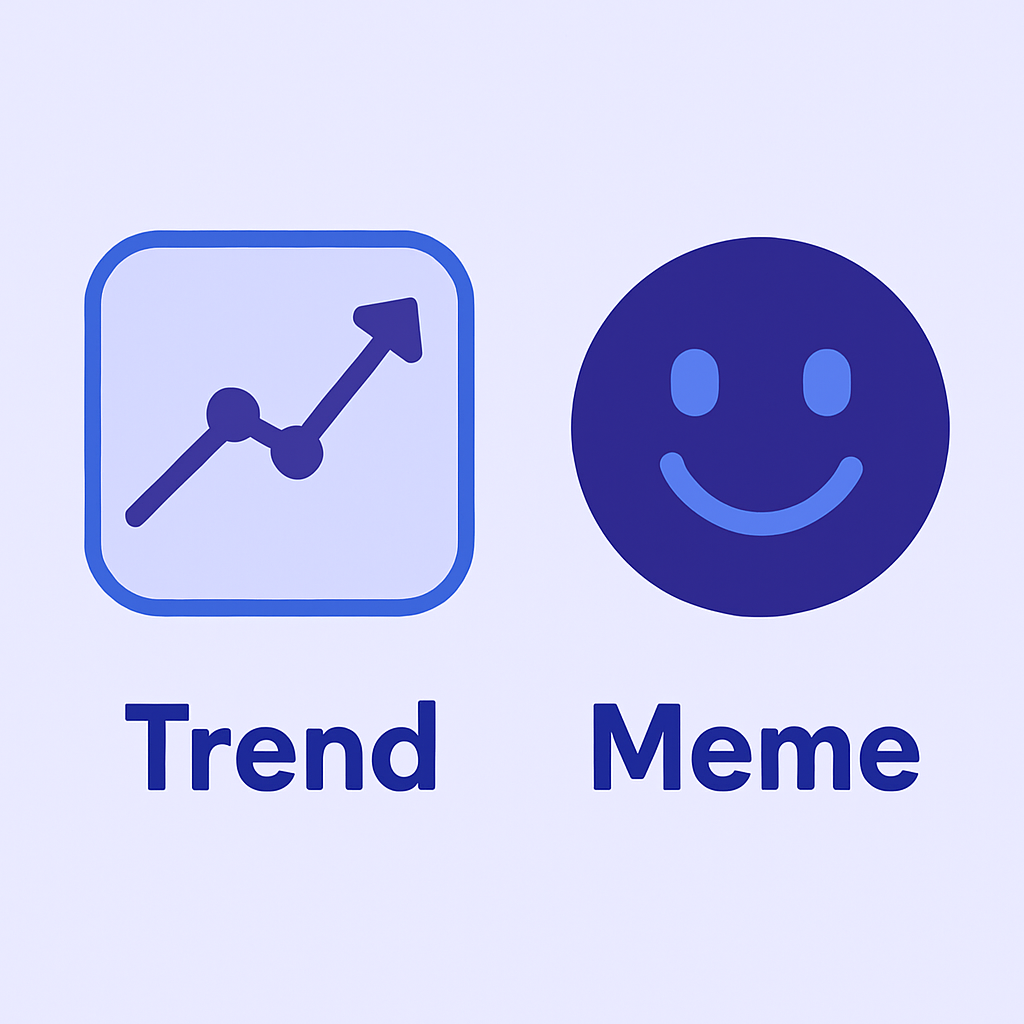Why Memes Last Longer Than Trends: The Psychology of Digital Culture
What fades fast as information often lingers long as emotion.
The Culture of Speed
There’s a popular saying on the internet: “If I’ve just found out about a trend, it’s already over.” It captures the absurd pace of our digital lives. On any given day, social media feeds are flooded with new challenges, hashtags, and micro–fads. We consume, repost, and move on — often before we even understand why something went viral. Trends dominate visibility, but their lifespan is painfully short. By the time you notice a trend, the internet has already buried it under a dozen new ones.
Speed has become the default rhythm of digital culture. But in that speed, something interesting happens: what travels fastest also disappears first.
Why Memes Outlive Trends
Memes, on the other hand, linger. They resurface months or even years later, taking on new forms, languages, or meanings. Unlike trends, memes don’t rely on novelty — they rely on emotional continuity. They are less about information and more about shared recognition.
A meme compresses an emotion into a simple format: a screenshot of frustration, a GIF of disbelief, a caption that says, “this is literally me.” You don’t have to know the original source to understand it; you just have to have felt something similar. That’s what gives memes their longevity — they don’t age with technology; they evolve with emotion.
The Four Traits of Long-Lived Memes
1 Emotional Resonance
A meme works because it mirrors collective emotion. It’s not the cleverness that sustains it — it’s recognition. When people say, “this is so me,” they’re not just laughing; they’re remembering a feeling.
2 Reusability
Good memes are modular. They can be remixed, localized, and reinterpreted without losing context. Trends demand originality; memes reward adaptability. That flexibility allows them to cross cultures and timelines with ease.
3 Contextual Relevance
Memes survive because the situations they describe never go away. Awkward meetings, Monday fatigue, unread messages, silent group chats — as long as human routines repeat, the emotions do too. Memes attach themselves to these recurring contexts and keep coming back.
4 Low Cost of Creation and Understanding
A meme spreads not because it’s expensive to make, but because it’s cheap to relate to. It takes seconds to produce and even less to understand. That low friction makes memes both viral and sustainable. They are emotional currency with zero transaction fees.
Why Trends Fade
Trends are built around participation and exposure. They require performance — a dance, a filter, a style — something that demands presence. But participation has a cost. Once effort outweighs excitement, engagement drops. Trends depend on algorithms and novelty, and novelty, by definition, cannot last.
Most trends are event-based, while memes are emotion-based. That’s why one burns bright and the other keeps glowing.
The Invisible Shift: When Memes Become Language
At some point, memes stop feeling like references and start functioning like language. You don’t “use” them consciously — they slip into your tone, your humor, even your expressions. I’ve caught myself saying things that originated as memes, without remembering where they came from. That’s when you realize: memes aren’t something we follow; they’re something that follows us.
In one line: Trends spread through exposure; memes endure through emotion.
What Creators and Brands Can Learn
- Design for format, not flash. Build flexible templates that others can reuse.
- Tap into emotion, not explanation. If people feel it, they’ll share it.
- Anchor your content in recurring contexts. Don’t chase the event — capture the emotion it repeats.
- Keep the friction low. The easier something is to remix, the longer it will live.
The Takeaway: What Really Lasts Online
Trends own the moment, but memes own the memory. We laugh at an old meme not because it’s new again, but because it reminds us how it once made us feel. The data fades, the feeling stays. That’s the quiet power of memes — they are not the noise of the internet, but its emotional archive.
#memes vs trends #online trends #internet meme culture #digital emotion #social media trends #K-culture insight #meme psychology

